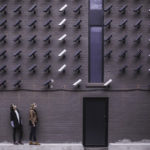Your Source for Security Cameras & Other Security Equipment
Security Cameras: Do’s & Don’ts
Security cameras help to protect homes, businesses and various properties from burglaries, vandalism and more. Unfortunately, if they are not installed properly, they can do more harm than good. Before you invest and install a video surveillance system on your property, review these security camera do’s and don’ts.
DO:
- Place the camera where the roof or ceiling meets the wall.
This spot naturally shields the camera from the elements, and it can usually give you the widest angle of viewing. - Protect your cameras from weather, tampering, and vandalism.
Depending on your security cameras location, you may need to invest in a weatherproof casing to shield it from environmental conditions. Also, be sure to mount your cameras out of reach and with a protective plate to prevent criminals from tampering, disabling, or damaging your equipment. - Securely mount your surveillance cameras.
Be sure that your cameras don’t shake or wiggle if walking or other movement sends vibrations to the wall. This instability could distort the images that your camera is transmitting and could potentially cause damage to your cameras. You may need additional mounting brackets or equipment to ensure your cameras are securely mounted. - Place cameras in heavily-trafficked or shrub-heavy locations.
Because bushes provide cover for intruders, having a camera monitor these potential hiding spots will improve your surveillance. You also want to have eyes on areas with heavy traffic such as walkways or gates. - Set your base unit in your attic.
This is often the most convenient spot for all of your cameras’ wiring to originate from. It also minimizes the need to string cables up and down walls if they can be run on the insides of your eaves under your roofline.
DON’T:
- Just install a camera in an area that won’t be well-lit at night.
If you want surveillance around the clock, be sure that your security cameras have night vision or an infrared setting or lens that works in low light. For outdoor cameras, pair your cameras with exterior lighting with motions sensors if possible. - Attach a camera to a gutter.
This is always a bad idea. Despite being high up and out of reach, the camera is completely exposed to the weather and its weight will put undue stress on your guttering system. - Limit your cameras to just your front door.
You should be monitoring all areas where criminals can potentially gain access. Install surveillance cameras near your back doors, side entrances, and sliding glass entryways. You may want to consider a security camera at the top of your basement stairs in case someone gains access to your basement. - Place a camera right above a basement window.
This location leaves your camera within reach to be disabled or vandalized. Instead, mount a camera under the eaves or even a second-story roofline and direct the lens toward the basement window. - Assume wireless means “completely wireless.”
This is not always the case. Even if your surveillance system operates using wireless signals, each camera and your base unit will still need to be plugged into a power source.
Share your own tips with us and your peers on Facebook, Google+, Twitter, LinkedIn, and Pinterest.
Your security is our priority! If you need help choosing the best security cameras for you, feel free to browse our selection online at SecurityCamExpert.com or call 888-203-6294 to speak with a representative directly.
